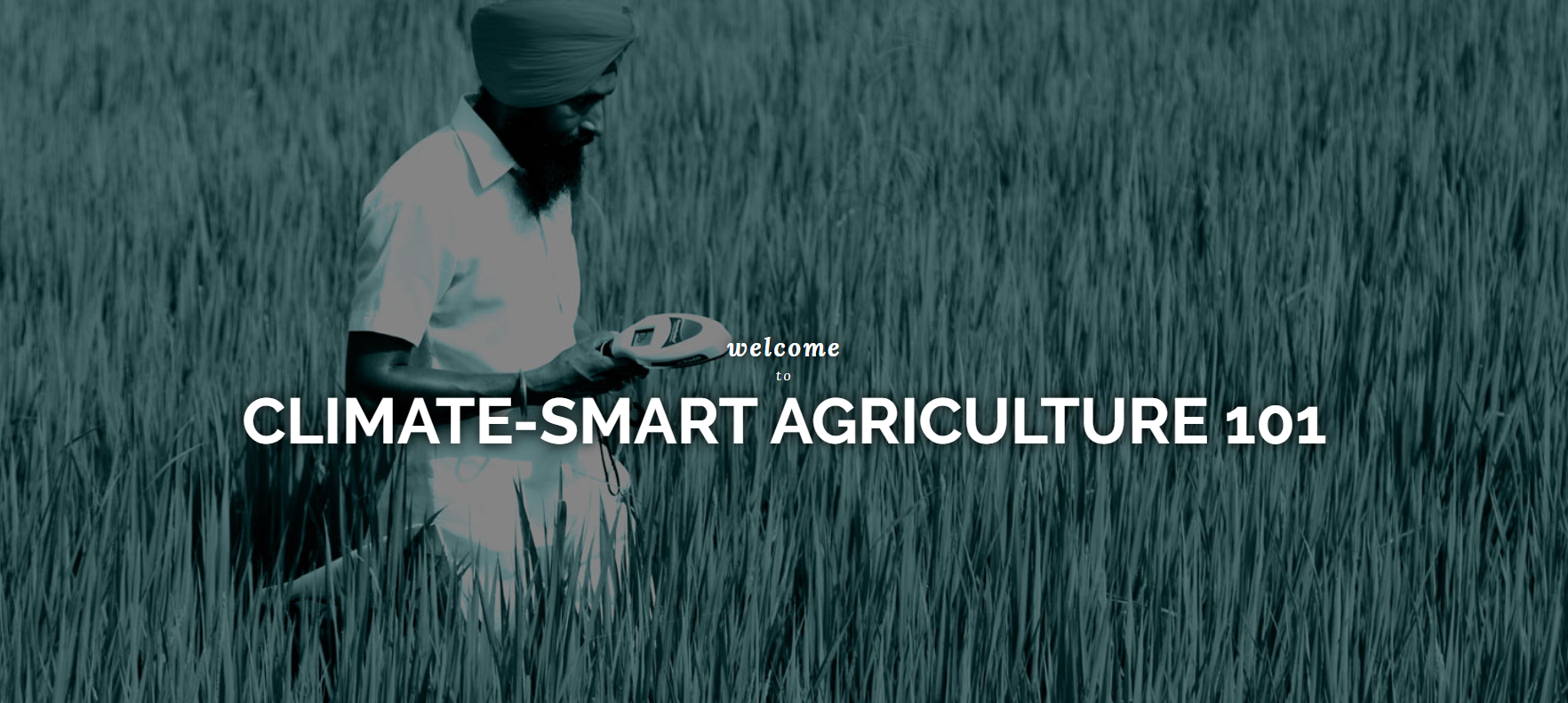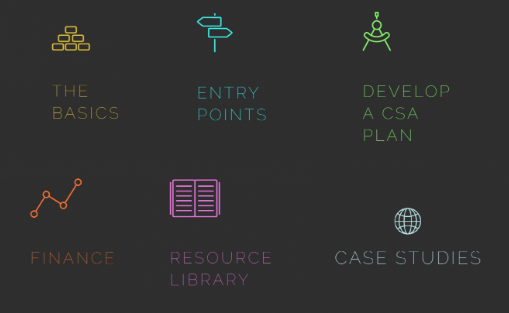CSA 101: your online guide to climate-smart agriculture

- Level: Introductory (Basics section) or advanced
- Time commitment: 1-2 hours (Basic)
- Learning product: Guidance
- Sector: Agriculture
- Language: English
- Certificate available: No
Introduction
The CGIAR Research Program on Climate Change, Agriculture and Food Security (CCAFS) and partners developed a guide website introducing multiple dimensions of the climate-smart agriculture (CSA) approach to food security and sustainable development. The website aims to help practitioners, researchers and decision-makers working with or interested in CSA. It provides guidance on how to get started, as well as all the resources you need to dig deeper. For countries following up on their commitments under the Paris Agreement, the CSA Guide is a useful tool for setting up mitigation and adaptation initiatives in agriculture.
What is climate-smart agriculture?
The most commonly used definition of climate-smart agriculture is provided by the Food and Agricultural Organisation of the United Nations (FAO), which defines CSA as “agriculture that sustainably increases productivity, enhances resilience (adaptation), reduces greenhouse gas emissions (GHGs) where possible (mitigation), and enhances achievement of national food security and development goals.”
CSA can help agriculture initiatives become climate-resilient. The approach is effective because it addresses a number of important challenges simultaneously:
- Food security, misdistribution and malnutrition
- The relationship between agriculture and poverty
- The relationship between climate change and agriculture
The Guide

The Guide presents the CSA approach to food security and sustainable development in a user-friendly format. It offers a combination of practical tools and guidelines and in-depth resources that can support the planning, implementation and assessment of CSA initiatives.
The guide is divided into six parts:
1. The basics: This section provides users with crucial information about what climate-smart agriculture is, how it helps address important challenges, how it is different from other sustainable agriculture approaches, and suggests introductory reading materials and videos.
2. Entry points:This section gives an introduction into the numerous entry points for initiating CSA programmes. To help users navigate among them, they are presented under three thematic areas: practices (e.g. soil management), systems approaches (e.g. value chains) and enabling environments (e.g. climate information services).
3. Develop a CSA plan:The guide also presents the CSA plan, which is an approach for planning, implementing and assessing CSA projects and programs. The CSA plan supports the operationalization of CSA planning, and implementation and monitoring at scale, through its four major components: situation analysis; targeting and prioritization; program support; and monitoring, evaluation and learning. The guide provides a step-by-step approach to developing a CSA plan, and presents useful tools and resources for each component.
4. Finance:This section offers an overview of potential sources of funding for CSA activities at national, regional and international levels and for a number of different potential “clients,” including governments, civil society, development organizations, and others. Additionally, it includes options to search among a range of funding opportunities according to CSA focus area, sector and financing instrument.
5. Resource library:The resource library provides quick and easy access to all the references, key resources, key terms and frequently asked questions related to CSA.
6. Case studies:This section brings together all the specific projects that are detailed in other sections of the guide. An interactive map allows users to view all case studies at once or filter the search by entry points.
The CSA Guide website was developed by the CGIAR Research Program on Climate Change, Agriculture and Food Security (CCAFS) for the World Bank in collaboration with a range of other partners and institutions. The guide is available in English, Spanishand French.
Related Articles
Related resources
- Find out how CCAFS is implementing CSA in its Climate-Smart Villages
- Read about CCAFS’ approach to CSA
- Climate-Smart Agriculture Sourcebook and Platform
- Climate-smart agriculture in Nepal: Champion technologies and their pathways for scaling up
- Prioritizing Investments in Climate-Smart Agriculture in Guatemala
- Barriers, incentives and benefits in the adoption of climate-smart agriculture
(1) Comment
Looking at this unprecedented weather event, climate variability, Climate Smart Agriculture is one of the potential opportunity to save lives from recurrent droughts, floods, cyclone & at this cOVID-19 Pandemic. This CSA will provide better food & biodiversity to address the climate crisis. Sustainable Food water, nutrition & biodiversity safety will en ensured withing this CSA strategy.